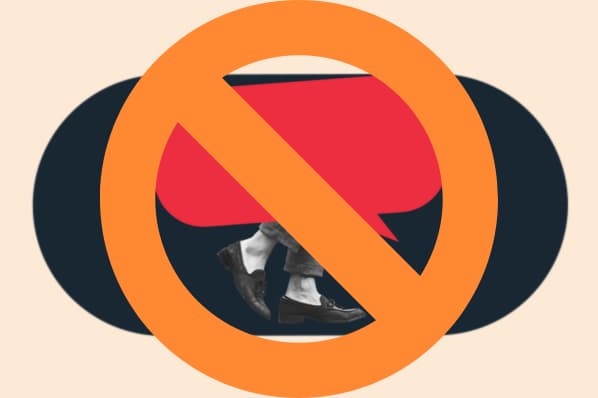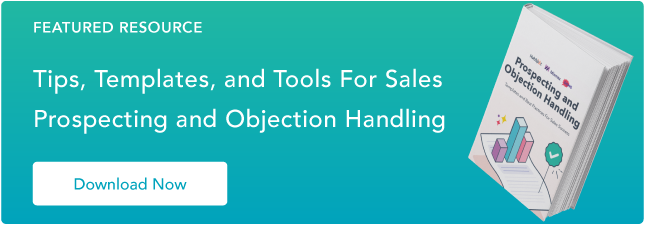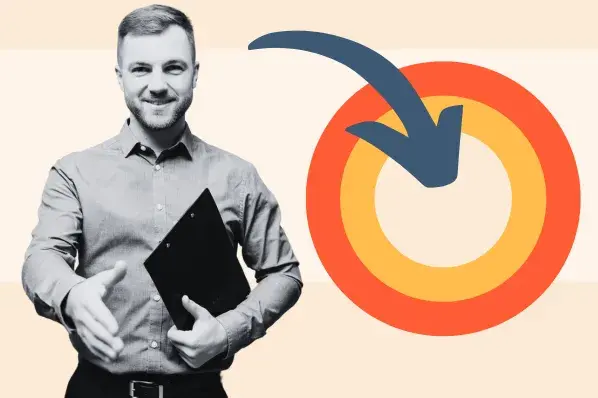Negotiation is a delicate balancing act. As a sales rep, you straddle the space between helping your prospect find a solution that works for them and protecting your company’s interests. By the time you’ve reached the negotiation phase of the sales process, you and your prospect have a common goal: getting your company’s offering into their hands. It’s a joint effort, and you should be working — not fighting — with your buyer to reach an ideal solution.
This doesn’t mean you’re at your prospects’ mercy. A negotiation isn’t a battle, but it's still something you can win — and if you can establish and maintain a strong position throughout the conversation, you'll be able to strike a deal that's good for both your customer and you.
But negotiations don't always go smoothly, so if you want to maintain the high ground while still arriving at a mutually beneficial outcome, you need to avoid the following problematic phrases.
Phrases You Should Never Say in a Negotiation
- 'This call should be pretty quick.'
- 'Between'
- 'What about a lower price?'
- 'I have the final say.'
- 'Let's work out the details later.'
- 'I really need to get this done.'
- 'Let's split the difference.'
1. "This call should be pretty quick."
Assuring your prospect the negotiation will be quick and easy won't put them at ease — it'll do the opposite. In a negotiation, people feel more comfortable knowing there's plenty of time to discuss the terms and come to a decision.
If they feel like the clock is ticking, they'll become more guarded and tense. You don't want that — once your prospect is in risk-aversion mode, they will make conservative choices. If you want your buyer to stay open, start by saying, "We've got [X minutes] on the agenda. That should be enough time, but I'm happy to discuss further if we need to."
2. "Between."
If you give your prospect a price range from $12,500 to $15,000, guess what’s going to happen? They’re going to ask for $12,500. Not to mention that the lower price "anchors" your prospect's perception of your product's value. They may have previously thought $15,000 was a good price, but as soon as you say $12,500, the higher number will seem extravagant.
3. "What about a lower price?"
You’re not always going to be able to sell your product at full price, and that’s okay — with one big caveat. If you offer a price cut, make sure you’re getting something in return. Will they sign today? Will they commit to a longer contract?
Keep in mind that offering a discount should never be your first play. Your product is priced the way it is for a reason, so don’t lose sight of its value in your desire to get the deal done.
Is there another lesser concession you can make that will encourage the prospect to sign? Exhaust all other available freebies before you drop the price. Buyers equate cost with value, so if you slash the price tag prematurely, you might unwittingly devalue your product in their eyes.
4. "I have the final say."
It might seem like a good strategy to position yourself as the ultimate approver to show your strength, but it’s not — even if you are. Keeping your approval power to yourself gives you an out if you need one, and that can be crucial in high-stakes deals.
Sometimes, you'll need time to step back from the negotiation to review the deal in front of you, especially if you've already made several concessions. Are these terms truly acceptable to you and your company? Telling your buyer that you need to run new requests by another stakeholder gives you the time you need to make a deliberate and informed decision.
5. "Let’s work out the details later."
They say the devil’s in the details for a reason. You wouldn’t hire a contractor to build you a house without signing a statement of work. Similarly, you shouldn’t agree to a price without first reviewing an SOW document example to understand exactly what your prospect expects you to provide.
6. "I really need to get this done."
Maybe it's the last day of the month and you need this one final deal to make your quota. We've all been there. But if you openly admit that you need to close this deal not tomorrow, not next week, but today? Your prospect will have you on the proverbial ropes.
Revealing that you’re under pressure to close the sale means your prospect doesn’t have to concede as much as they might have otherwise. They might also try to sneak in a few audacious asks at the buzzer. After all, if they know that you’re desperate to get a contract inked by midnight, why shouldn’t they push you to lower your price or offer expanded services for free?
This isn’t to say that expressing urgency is always a bad thing. For instance, the prospect might have discussed a drop-dead date that they need to have a solution in place. Working backward from that date and accounting for installation and training, the salesperson can pinpoint the ideal contract sign date. And if that day is today? Time to turn up the heat.
7. "Let's split the difference."
Splitting the difference means substantially decreasing your margins. It also makes your product appear dramatically less valuable. Try to resolve the difference another way. Even a small concession can help you bridge a stand-off by making your prospect feel like they've successfully "won" something and making you seem more reasonable.
Maybe you can help them migrate their data, market the product to the end users, or personally teach them how to use the product so they don't need to pay for the same level of support. Get creative. There are a lot of ways you can go here without resorting to cutting your position short and meeting halfway.
Negotiations can be finicky, tricky engagements — and they have the potential to turn sour if you're not thoughtful and deliberate in how you approach them. The phrases listed here have the potential to undermine your position and put you at an unnecessary disadvantage in these kinds of conversations. So no matter what you're negotiating, always be sure to avoid them
Sales Negotiation








.jpg)

